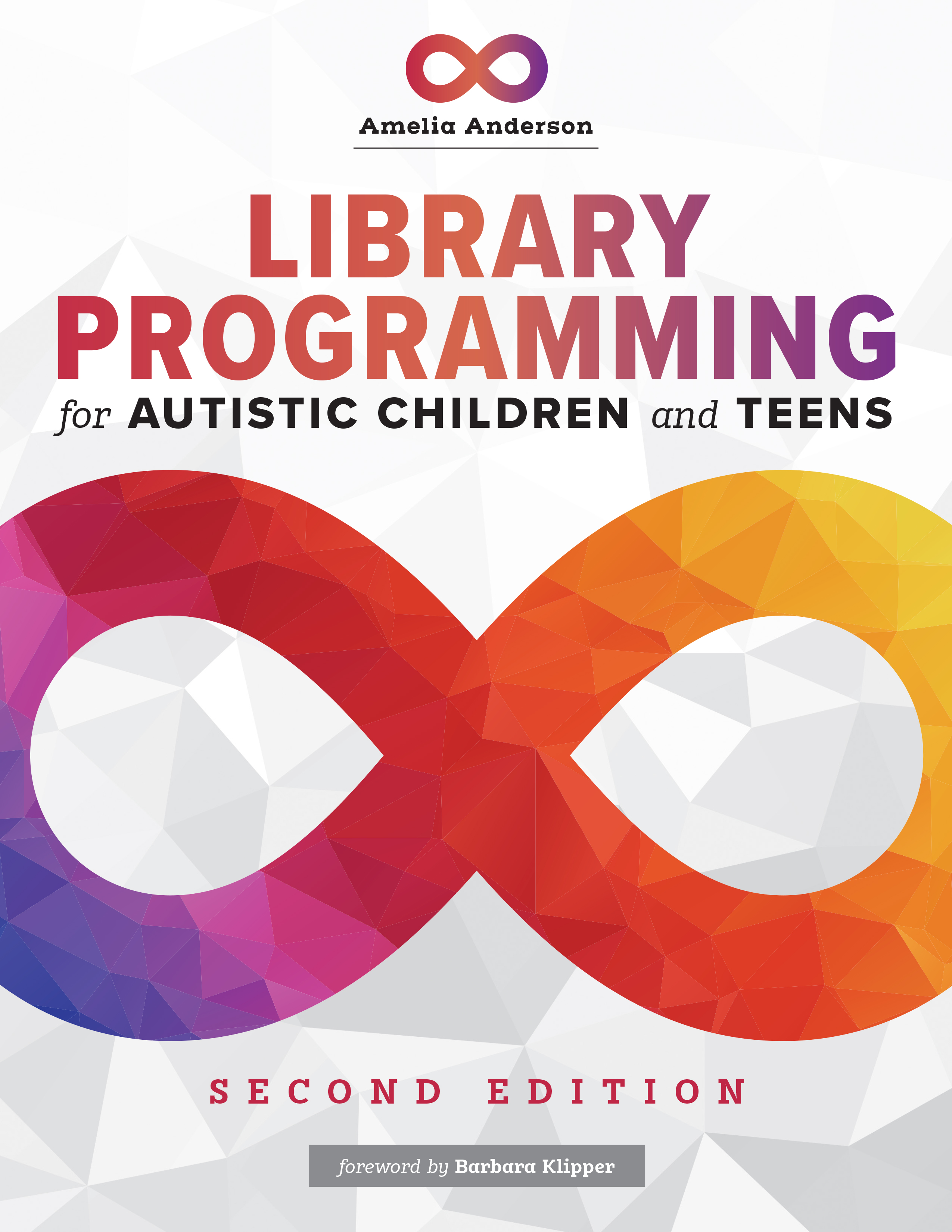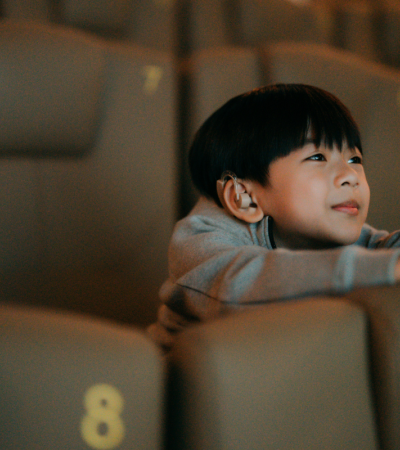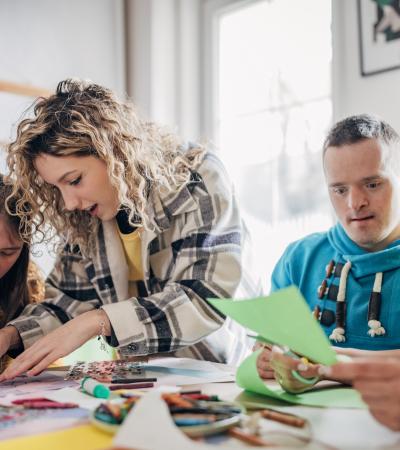Best Practices
This list of best practices, adapted from the ALA Editions book “Library Programming for Autistic Children and Teens,” will help to support your autistic patrons in all library programs. In formulating your dream program, you may find that you cannot incorporate everything you would like. As always, the realities of budget, staffing and available space may limit your plans. But don’t give up! It is better to offer a program that does not include every desirable element than not do a program at all.
1. Implement principles of Universal Design.
With Universal Design, you are creating an environment that is more universally accessible to all library patrons. For us, this means a more naturally inclusive environment for autistic children and teens, helping to remove the need for segregation or unnecessary disclosure.
2. Limit enrollment.
Because no two autistic people are alike, small groups make it easier to customize a program to meet the needs of the participants and to provide individual support as needed.
3. Have teen or adult assistants.
As a general rule, it is difficult for one librarian working alone to conduct a program. Try having additional support from library staff or asking parents or caregivers to assist you as volunteers.
4. Prepare participants for the program.
Help to mitigate anxiety by doing a few simple things to prepare participants for your programs in advance. Offer library tours in person or virtually, and provide Social Stories™ online. Do a quick Google search for examples.
5. Use visual supports.
When images are used as a communication tool, they are known as visual supports, and libraries have used them in many different ways. A visual schedule helps to make a program predictable, as do handouts.
6. Manage transitions.
Use your visual schedule to help children transition by pointing out the next image as each activity ends, or by removing the images on the board as activities are completed. Try using a visual timer and giving verbal cues when preparing to transition from one activity to the next.
7. Control the environment.
Controlling the environment can help to minimize negative sensory input, as well as add predictability. Reduce distracting noises, sounds, visuals and smells when possible, and keep the room as empty of clutter as possible. Take a picture of your program setup so you can try to arrange the room in a similar way for each recurring event.
8. Provide designated seating, with options.
Have seating that supports children, helps them focus and delineates personal space. Provide multiple options so children and teens can choose what works best for their individual needs.
9. Supply fidgets and other sensory tools.
It is a good idea to keep a box of squeeze balls and other small handheld items kids or teens can manipulate while waiting or during the program.
10. Create quiet or sensory rooms.
If you have the available space, consider designating an unused study room, meeting room or office as a quiet room.
11. Incorporate repetition and routine.
Routine does not have to mean boring. Routines give children something to look forward to and something to plan for. For example, children can look forward to singing their favorite song or reading along with a well-loved book. Routines help provide structure and familiarity and relieve stress over the unknown.
12. Provide structure while being flexible and understanding.
Characteristics of autism manifest differently in every person. Provide ample structure, but also be generous and flexible whenever possible.
Program Examples
April is Autism Acceptance Month, but it is always a good time to provide inclusive programs to support autistic library patrons. The following program ideas are adapted from those provided in "Library Programming for Autistic Children and Teens," where you can find more detail for each and even more program ideas.
For young children:
Try a sensory storytime. Sensory storytimes should all include the same basic elements:
- A welcome song that is used consistently for each session: Try “The More We Get Together” for larger groups or a more personalized song that introduces each child by name for smaller groups.
- Introduction activity: Try rolling a large ball to each child in turn, and ask him to roll, kick or throw the ball back. You can sing: “Roll the Ball” (to the tune of “Row, Row, Row Your Boat”) Roll, roll, roll the ball, roll the ball to [child’s name]. [Child’s name four times], roll it back to me.
- Sensory activities: Give every child who wants one a no-spill toddler container of bubbles to practice blowing bubbles with.
- Stories read aloud: Try From Head to Toe by Eric Carle. Have children and caregivers try the movements in this book.
- Songs or fingerplays: Try “The Itsy Bitsy Spider” to encourage children to fingerplay along with you.
- Closing song or activity that is used consistently for each session: Repeat the same welcome song, or try “Skinnamarink.”
This is just a basic template that can be modified for your use; the order of nearly every element can be swapped (with the exception of welcome, introductions and closing activities). Some libraries incorporate crafts or time for sensory “free play.” Just make sure to keep your programs consistent so attendees know what to expect each time they attend.
For school-aged children:
Try an inclusive STEM-oriented “deconstruction” program. Bring in old or broken toys that kids can take apart carefully, examining the inner workings as they deconstruct. You can find inexpensive items to deconstruct at yard sales and thrift shops, or even at home if you have children of your own. For children with an artistic proclivity, try reconstructing the pieces in a later program to make found-object art projects.
For teens
Try gaming. Offering gaming at the library has the advantage of putting the experience in a social context, giving autistic gamers an opportunity to connect, relieve stress, and immerse themselves in an enjoyable pastime. Low-tech tabletop gaming programs can be just as enjoyable as video games, and much more cost-effective.
Set up tables with a variety of games with low barriers to entry such as Uno, Connect 4 and Jenga, as well as life-size games that allow for more physical movement. Start the program with “Getting to Know You” Bingo, which helps participants feel comfortable with one another in the room.
For more, purchase the second edition of "Library Programming for Autistic Children and Teens" from the ALA Store.




